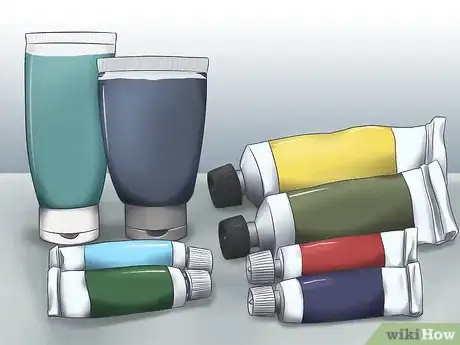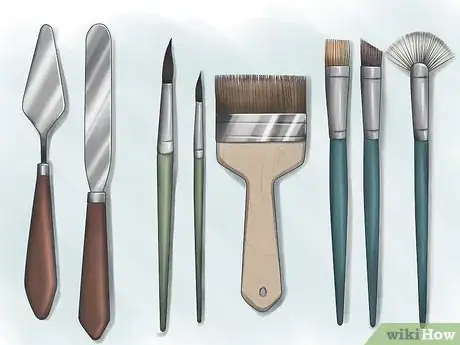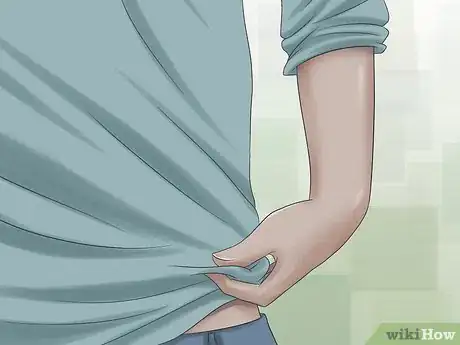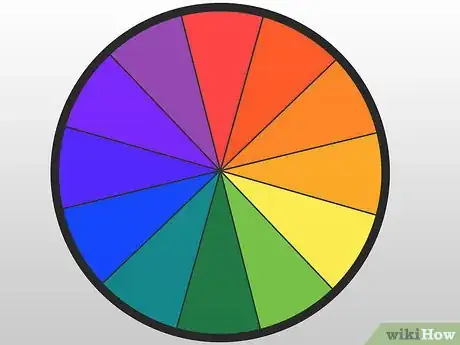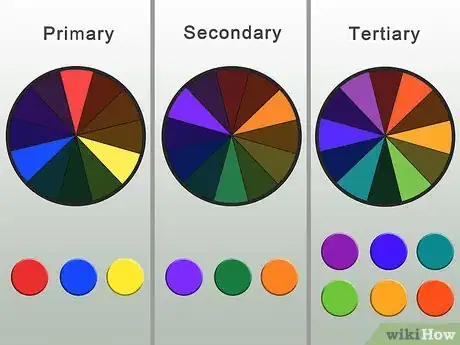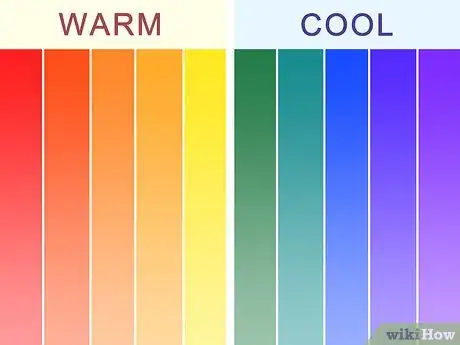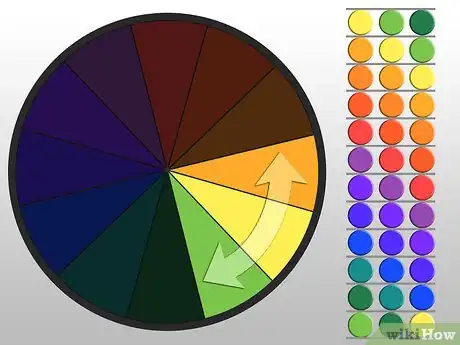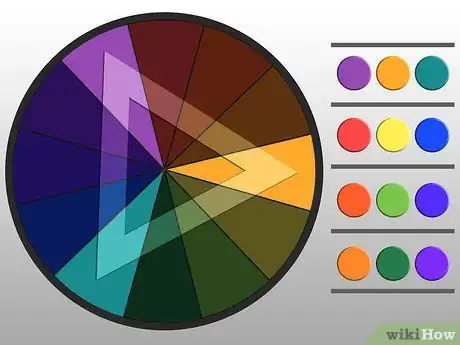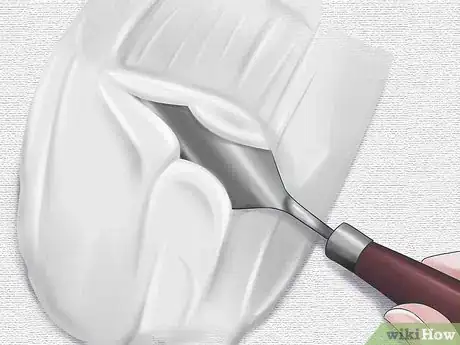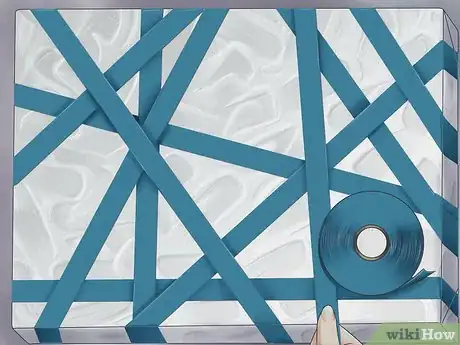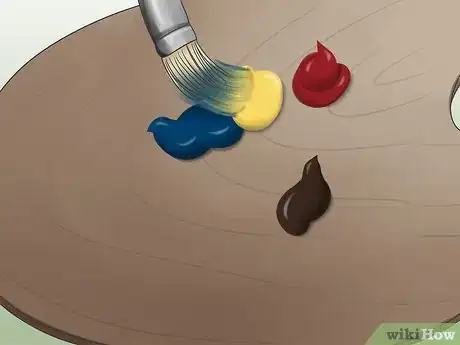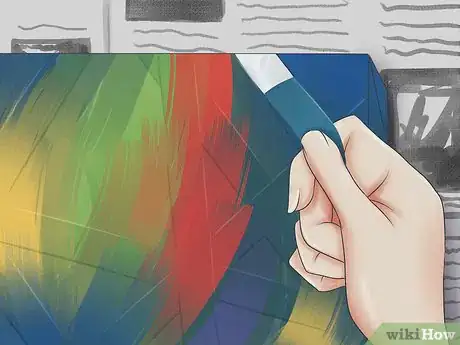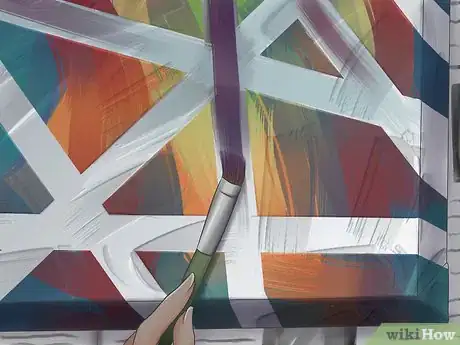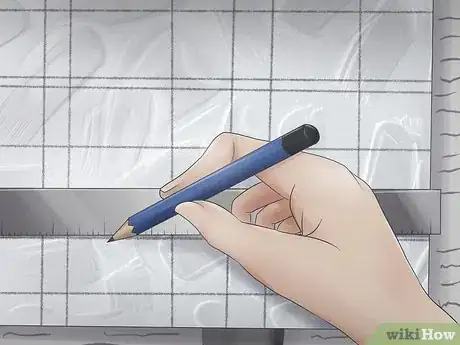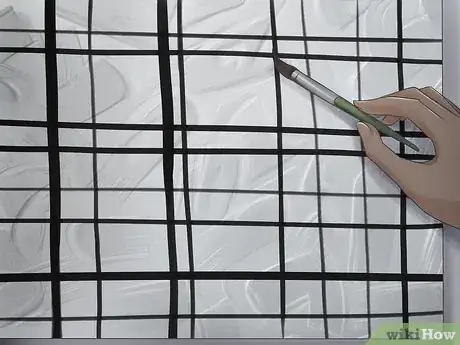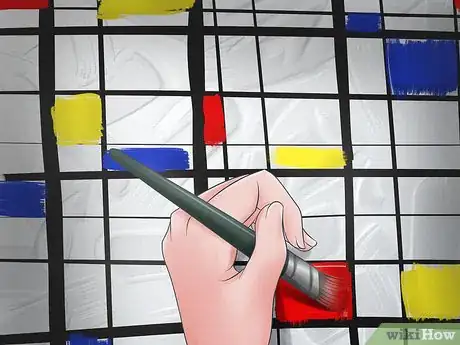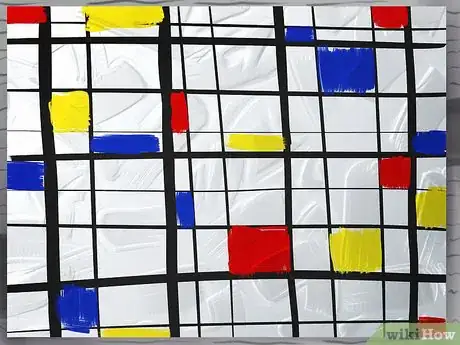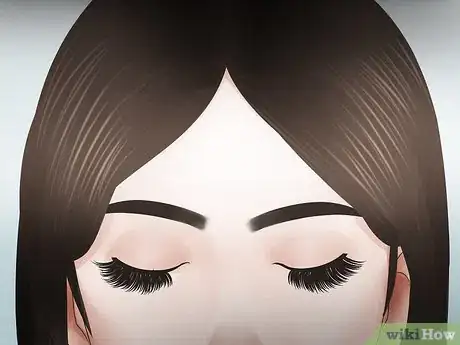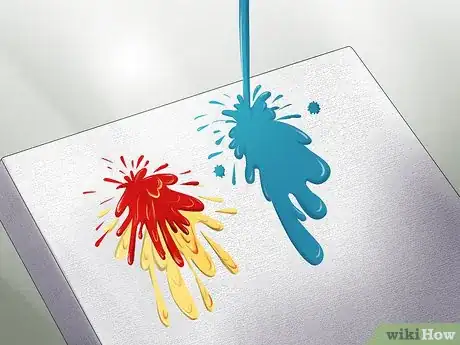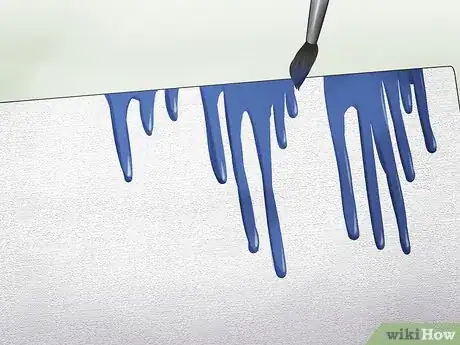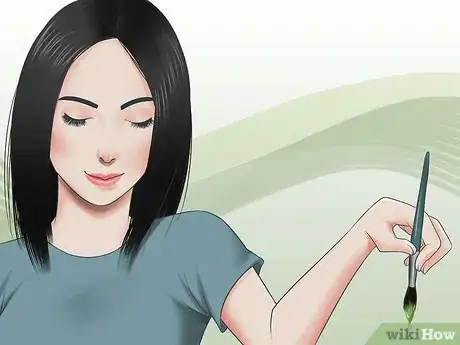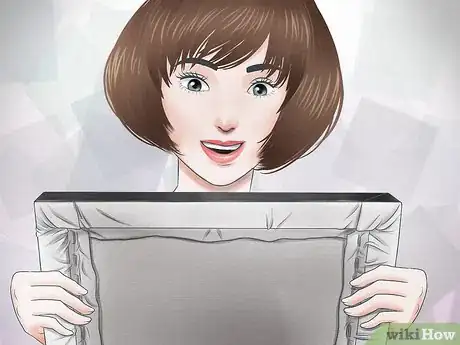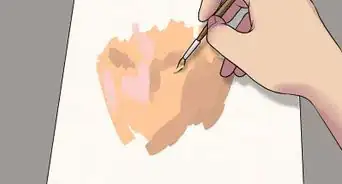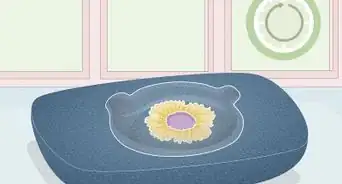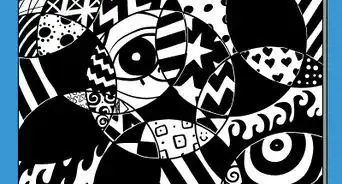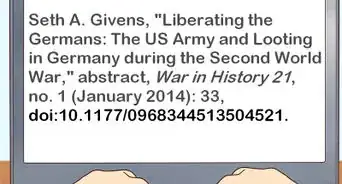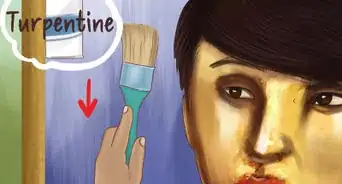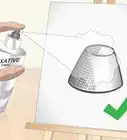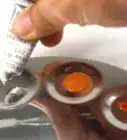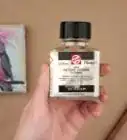This article was co-authored by Kelly Medford. Kelly Medford is an American painter based in Rome, Italy. She studied classical painting, drawing and printmaking both in the U.S. and in Italy. She works primarily en plein air on the streets of Rome, and also travels for private international collectors on commission. She founded Sketching Rome Tours in 2012 where she teaches sketchbook journaling to visitors of Rome. Kelly is a graduate of the Florence Academy of Art.
wikiHow marks an article as reader-approved once it receives enough positive feedback. This article received 105 testimonials and 95% of readers who voted found it helpful, earning it our reader-approved status.
This article has been viewed 1,414,739 times.
How many times have you looked at an abstract painting and heard someone say, "I could do that!"? While abstract painting looks easy to some, it can actually be more challenging than traditional or classical painting. This is because abstract art defies rules and conventions. It's up to you as the artist to break rules, be expressive, and decide what is art. First, prepare to paint. Then, decide if you'd like to create a random geometric abstract painting (in the style of Paul Yanko or Thornton Willis), a minimalist geometric abstract painting featuring bold geometric shapes (in the style of Piet Mondrian or Paul Klee), or if you'd like to focus more on the process of painting (in the style of Jackson Pollock or Mark Rothko).
Steps
Preparing to Paint
-
1Find a canvas. You can buy a ready made canvas of any size in a craft store. It will be prepared for immediate use; however, there are no rules saying you have to use a primed and stretched canvas. In fact, abstract artists often use unstretched, unprimed canvases.[1]
- If you prefer a colored background, buy a jar of Gesso to prime the canvas and give it a touch of color. The primer should dry quickly.[2]
-
2Choose your paints. Decide whether to use acrylics or oil paint. Acrylics have no odor and are easy to work with since they dry fast and can be painted over if you make a mistake. Oils, on the other hand, aren't usually used because they take longer to dry, have an odor, and do not allow you to paint over mistakes.[3]Advertisement
-
3Gather brushes and other tools. Pick whatever brushes you like to use with the paint you've already chosen. You might also consider using a palette knife to apply paint, giving it a textured look. While some artists like to use an easel, many abstract artists choose to place their canvases directly on the floor in order to be closer to the work.[4]
- If you're unsure about what colors work well together, think about picking up a color chart/wheel. This will actually show you which colors compliment each other.
-
4Change into painting clothes. Depending on how messy you're planning on getting, it's wise to change into an old shirt or painting smock. Wearing something you're not worried about will allow you to focus more on the painting or process of abstract art.
- You may want to lay down newspapers to prevent drips or spills, especially if you plan on flicking paint or laying the canvas on the ground.
Learning Color Theory
-
1Get a color wheel. Quite simply, a color wheel is a circular tool that features a variety of colors. It's useful for showing the relationship between colors - what looks good together, what clashes, and so on.[5]
- Find a color wheel at a local artist supply store, craft store, or paint department.
-
2Understand primary, secondary, and tertiary colors. At their most basic, a color wheel is divided into three parts: the primary colors (red, blue, yellow). Secondary colors are created by mixing these primary colors together (green, orange, purple). Tertiary colors can me made by mixing the primary and secondary colors (yellow-orange, red-orange, red-purple, blue-purple, blue-green & yellow-green).
- To become familiar with color creation, try making your own color wheel.
-
3Learn about warm and cool colors. Warm colors, such as reds, yellows, oranges, tend to create a sense of movement and advance in space. Cool colors, like blues, greens, purples, recede or show little movement.[6] They are calming colors.
- White, black, and gray are seen as neutral colors.
-
4Work with color harmonies. Several formulas exist for choosing colors that work well together. Try:
- Analogous colors: Choose two or three colors that are next to each other on the color wheel. One of the colors will probably stand out, but all three will look great together.
- Complementary colors: Choose two colors that are directly opposite of each other on the color wheel. These colors can really pop out.
- Triadic colors: Choose three colors that are evenly spaced on the color wheel. If you drew a line to connect the colors you chose, you would have a triangle. These colors will really stand out.
Painting Random Geometric Abstract Art
-
1Create a textured background. One of the easiest ways to do this is to apply artist-quality Gesso, a thick gel-like primer.[7] Apply it like paint, or spread it around with a palette knife, if it's thick enough. This will allow you to control the style of the texture.
- You could also leave the canvas smooth and blank. Again, there are no rules for abstract art saying you must have a textured background. Many artists simply start painting on a blank canvas.
-
2Tape lines at intersecting points across the canvas. Use blue painter's tape and place several lines, creating geometric shapes, such as triangles, squares, and rectangles. The goal is to create images that aren't representative of reality. The taped lines will help you paint Painter's tape will ensure that your painting has crisp, clear lines and shapes.
- Use rulers and pencil lines instead of tape. If you don't want to deal with the gaps that the painter's tape will cause when you remove it, try marking your canvas using a ruler and pencil. Again, lay your ruler down across several points to create geometric shapes.
-
3Mix your paint colors. Decide which colors you'll be using to complete your painting. Mix them on an artist's palette or plate. You could also mix the colors directly on the canvas, but this will take away some control over the finished look.
-
4Paint in the spaces between the tape. Don't worry if you happen to get paint on the painter's tape. Also, don't feel as though you must fill your entire canvas, or all of the shapes, with color.
- Some abstract artists will outline the colors of each shape before they begin painting. Others simply paint and decide which colors to use as they go along.
-
5Remove the tape. As soon as you've decided the painting is complete, remove the painter's tape. If you'd like crisp, clear edges, remove the tape while the paint is still wet. If you remove the tape from a dry painting, it's liable to pull paint away with it, creating slightly rough edges.[8]
-
6Fill in the blank space from the tape, optional. Once you remove the tape, you'll notice white lines from where the tape was covering the canvas. While you can leave it, you could also paint the lines in.
Painting Minimalist Geometric Abstract Art
-
1Create a textured background. One of the easiest ways to do this is to apply artist-quality Gesso, a thick gel-like primer.[9] Apply it like paint, or spread it around with a palette knife, if it's thick enough. This will allow you to control the style of the texture.
- You could also use heavy paper or poster board. If you do this, you won't need to prepare or prime the surface.
-
2Use a ruler and pencil to create lines. You should make several horizontal lines with varying spaces in between, as well as vertical lines. Mark as many as you like, but be aware that fewer lines will mean larger squares and rectangles.
-
3Paint the lines. Use black paint to create bold lines. You can make some lines thicker and others thinner. Your painting will now look like a grid with black lines.
-
4Paint only a few squares and rectangles. Use primary colors (red, blue, yellow) and fill in several shapes with paint. While you could fill in every shape, this will make your painting look busy and overwhelming. Instead, choose just a few shapes to paint in. They'll stand out more.
-
5Leave the white space. The white space will make your primary colored squares pop.
Painting Gestural Abstract Art
-
1Move your canvas to the floor. Many abstract artists say that this allows them to be closer to the work. Also, if you're creating a gestural, or action, abstract painting, it will be easier to apply the paint in a variety of ways.
- Don't feel as though you can't move the canvas while you're painting. In fact, you may create unique designs by starting on the floor and then moving the canvas upright while the paint is still wet.
-
2Clear your mind. With gestural abstract art, you're not attempting to represent an image. Instead, focus on the process of applying the paint. Try a variety of applications and see what you like.
-
3Mix your paint directly on the canvas. Since this is more about the process of painting, you don't need to worry about creating a specific palette to work from before you begin. Instead, work on the colors as you're painting.
-
4Pour paint onto the canvas, optional. Pouring paint on the canvas is simply one way to create a totally unique and unplanned image. Pour as much or as little paint as you like.
- You can also vary the distances from which your pour paint onto your canvas. Pouring from a great height will most likely create splatters, while pouring closer will offer more control and precision.
-
5Splatter or drip paint onto the canvas, optional. Use whatever implement you like and dip in the paint. Then, flick the tool in order to splatter the paint or hold it over the canvas, allowing the paint to drip.
- You can use brushes, straws, squirt bottles, or old toothbrushes to splatter or drip the paint.
-
6Try closing your eyes and painting. If there's one thing that most abstract artists agree on, it's that an abstract painting shouldn't represent reality. One of the best ways to remove yourself from accidentally painting a recognizable form is to paint with your eyes closed.
- Allow the brush and paint to move over the canvas without worrying about the image you're creating. This type of painting is more about the experience than the outcome.
-
7Stop when the painting feels complete. Do not go back to improve or touch it up. Abstract artists don't think about the outcome; they just stop when they feel ready. Do not overwork your painting, but learn to finish it the moment you feel it is finished.
Expert Q&A
Did you know you can get expert answers for this article?
Unlock expert answers by supporting wikiHow
-
QuestionHow should I start an acrylic painting?
 Kelly MedfordKelly Medford is an American painter based in Rome, Italy. She studied classical painting, drawing and printmaking both in the U.S. and in Italy. She works primarily en plein air on the streets of Rome, and also travels for private international collectors on commission. She founded Sketching Rome Tours in 2012 where she teaches sketchbook journaling to visitors of Rome. Kelly is a graduate of the Florence Academy of Art.
Kelly MedfordKelly Medford is an American painter based in Rome, Italy. She studied classical painting, drawing and printmaking both in the U.S. and in Italy. She works primarily en plein air on the streets of Rome, and also travels for private international collectors on commission. She founded Sketching Rome Tours in 2012 where she teaches sketchbook journaling to visitors of Rome. Kelly is a graduate of the Florence Academy of Art.
Professional Artist
-
QuestionHow do you show movement in art?
 Kelly MedfordKelly Medford is an American painter based in Rome, Italy. She studied classical painting, drawing and printmaking both in the U.S. and in Italy. She works primarily en plein air on the streets of Rome, and also travels for private international collectors on commission. She founded Sketching Rome Tours in 2012 where she teaches sketchbook journaling to visitors of Rome. Kelly is a graduate of the Florence Academy of Art.
Kelly MedfordKelly Medford is an American painter based in Rome, Italy. She studied classical painting, drawing and printmaking both in the U.S. and in Italy. She works primarily en plein air on the streets of Rome, and also travels for private international collectors on commission. She founded Sketching Rome Tours in 2012 where she teaches sketchbook journaling to visitors of Rome. Kelly is a graduate of the Florence Academy of Art.
Professional Artist
-
QuestionCan I still do this if I am bad at painting?
 Community AnswerOf course! Abstract art is very forgiving. You can even use your fingers if a paintbrush intimidates you. One good way to remove self-doubt is to paint blindfolded while listening to music. The rhythm of the music will "guide" your hand, and your painting will have more feeling and emotion.
Community AnswerOf course! Abstract art is very forgiving. You can even use your fingers if a paintbrush intimidates you. One good way to remove self-doubt is to paint blindfolded while listening to music. The rhythm of the music will "guide" your hand, and your painting will have more feeling and emotion.
References
- ↑ https://www.moma.org/learn/moma_learning/themes/abstract-expressionism/the-processes-and-materials-of-abstract-expressionist-painting/
- ↑ Kelly Medford. Professional Artist. Expert Interview. 2 July 2019.
- ↑ Kelly Medford. Professional Artist. Expert Interview. 2 July 2019.
- ↑ https://www.moma.org/learn/moma_learning/themes/abstract-expressionism/the-processes-and-materials-of-abstract-expressionist-painting/
- ↑ http://www.colormatters.com/color-and-design/basic-color-theory
- ↑ Kelly Medford. Professional Artist. Expert Interview. 2 July 2019.
- ↑ http://startstudioarts.si.edu/2010/07/gesso-tips-techniques.html
- ↑ http://www.realsimple.com/home-organizing/home-improvement/painting/six-steps-painting-room/outline-blue-tape
- ↑ http://startstudioarts.si.edu/2010/07/gesso-tips-techniques.html
About This Article
To create a random geometric abstract painting, first make a textured background by applying Gesso, a thick, gel-like primer, to your canvas. Then, use blue painter’s tape and tape lines at intersecting points across the canvas to create geometric shapes, like triangles and squares. Next, mix the paint colors you want to use, and paint them in the spaces between the tape. If you want crisp, clear edges on your painting, remove the tape right away. Removing the tape after the paint dries will give you a look with rougher edges. For more information on creating abstract paintings, including painting gestural abstract art, scroll down!


